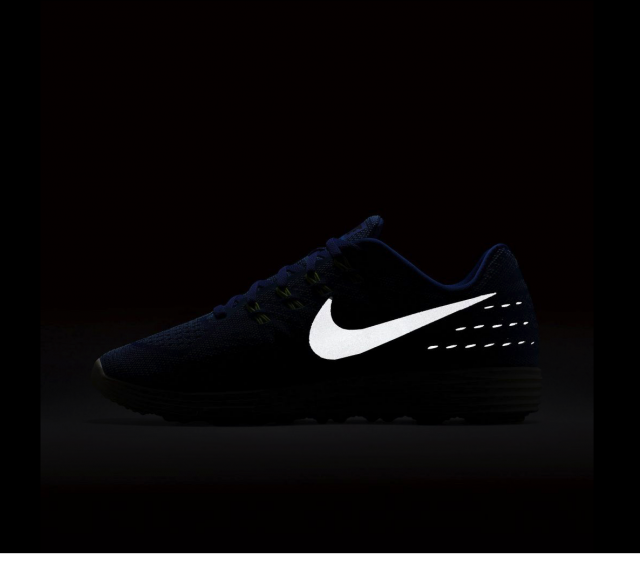On January 19th, as part of its decade-long tradition of honoring Black History Month, Nike dropped this year’s line of commemorative sneakers. The 12 new shoe designs feature special black and white colorways of shoes endorsed by some of the company’s highest profile spokesmen, including LeBron James, Kevin Durant and Kobe Bryant. They also symbolize how the company has leveraged what’s arguably become its most profitable asset: African-American cool. But not everyone is impressed…or honored.
The backstory: Thirty years ago, in 1985, Nike executives, in search of a way to cement the company’s hold on the athletic market, eyed a top Chicago Bulls draft pick out of North Carolina. His name was Michael Jordan. The idea was simple: if execs could sign a player of Jordan’s potential and market his cultural cache effectively, they could potentially boost their bottom line.
We all know what happened next: Nike aggressively wooed Jordan to the most lucrative celebrity sneaker endorsement of the era, offering him a $500,000 contract over five years, including stock options, and making his initial take amount to some $7 million. (After entering the company’s boardroom, he was shown a highlight reel of his best plays set to the Pointer Sisters’ 1983 hit “Jump,” and informed he could have a say in the shoe’s design.) At one point, Nike paid Jordan’s fines for defying the NBA’s strict uniform policy, eventually creating ads around the league’s ban.
The strategy of selling Jordan – and Nike – as an outlaw brand frowned upon by the NBA worked, and worked wonderfully. The first Air Jordan sneaker, released in 1984, retailed for $65, and moved $70 million worth of product in less than two months. By year’s end, the Air Jordan franchise — which included athletic wear and accessories in addition to sneakers — raked in revenues of more than $100 million. By 1987, the company was producing commercials featuring a high-flying Jordan dunking to a beat-boxer’s rhythm. Suddenly style, athletic dominance, and rejecting the status quo were all neatly stuffed into a box with the Air Jordan logo on the side.
Never one to rest on its laurels, Nike adapted and extended its Jordan strategy to other black athletes. Soon Bo Jackson, Penny Hardaway, Gary Payton, Jason Kidd were endorsing their own lines of signature shoes and marketing schemes that played on the athletes’ rough-and-tumble beginnings and had the same appeal: If you wanted to show edge on and off the court, you wore Nike. Millions of consumers took the company up on the challenge.
Of course, the marketing strategy worked because black culture is cool. Always has been. But the fact is that Nike, more than any other consumer company marketing African-American accomplishment and swagger, hasn’t really shown the same kind of loyalty. Though all of its athletes were (and are) paid handsomely for their efforts — in 2003, the new face of the company, LeBron James, signed a $90 million contract that same year that led to sales of $300 million worth of sneakers — the reality is that the black America from which Nike takes its cues is not doing nearly as well. According to a 2011 report by Pew Research Center, the racial wealth gap is larger than it’s ever been, with the median wealth of a white family now measuring at least 20 times higher than that of a black family — black wealth has declined to its lowest recorded levels ever — and 18 times that of a Latino family. In contrast, profits at Nike topped $23 billion in 2013 and top company executives took home between $4-14 million a year shelling out sneakers that cost, on average, $130 a pop.
If Nike is truly invested in celebrating black America, it should do so year-round, not just in February, and do so with the help of with athletes, advertisements, and charitable initiatives that do more than beef up its bottom line. It should publicly acknowledge not just the role that black athletes have played in the company’s astronomical growth, but also pay tribute — and provide financial support — to the communities that helped create such stars, perhaps by funding anti-violence initiatives in cities like Chicago and Oakland, relaunching initiatives like midnight basketball and other sports-based violence prevention programs, and expanding its lauded innovation program to the communities that actively consume Nike products.
As the company’s own narratives suggest, no meaningful journey is easy, but it’s on Nike to just do it. And it should start today.
Jamilah King is a Brooklyn-based writer from San Francisco who covers race, culture and sexuality. She’s currently senior editor at Colorlines, where she blogs about race and culture.
Source: splinternews.com










